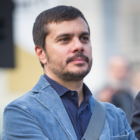Cultural welfare – What role can the arts play in the health and well-being of citizens?
The publication of the New Agenda for Culture by the European Commission in 2018 was a significant development for people working in the field of culture as it widened the focus from cultural policies to so-called cultural crossovers, i.e. interactions between cultural production and participation and policy areas external to the traditional cultural sector, including health and well-being, alongside social cohesion and innovation.
A series of studies and research projects carried out confirms the slow but increasing spread of the belief that, as Prof. Pierluigi Sacco explains, “as a sensory experience that has a profound effect on both the cognitive and emotional dimensions, and as a form of human activity that often lends itself to promoting engaging forms of relationality, culture can really do a lot to humanise care practices.”
It is a great challenge for the entire cultural and social system, from institutions to private organisations and individual citizens. Foundations can play a fundamental role in meeting this challenge, testing themselves in two of their specific fields. The first role is that of experimenters: where the public welfare system and the world of institutions and cultural operators are struggling to reconfigure themselves, given a lack of resources that often puts well-established services at risk, leaving little room for innovation, foundations are organisations that can lead the way and which can and must take the risk of implementing innovative and experimental actions which, if well carried out, can be brought to the attention of a wider public. The second area of action is relationships. Increasingly, the world of philanthropy is called upon to play a role not only by providing financial resources but by fostering the creation of relationships and establishing communication between apparently distant worlds.
For these reasons, the Arts & Culture Thematic Network of the European Foundation Centre decided to dedicate an in-depth meeting on this subject in Turin last November. With the help of experts and direct encounters with some particularly successful projects, several possible paths emerged from an analysis of the context to which foundations can make an important contribution.
We need first of all to encourage the development of a system of cross-sectoral relationships between public and private bodies on the theme of cultural welfare. In this context, replicable models of actions or protocols can be developed and their dissemination promoted. It therefore seems essential to combine these with scientific instruments for measuring the impact of projects. Another central theme is that of knowledge: the theme of cultural well-being needs to be disseminated both among citizens and among cultural and health professionals by contributing to cultural programs and creating specific training courses starting from university study courses. All of these are activities which foundations normally find themselves directly supporting (universities, courses for professionals, scholarships, cultural shows, well-established local initiatives) so it would be sufficient to work on facilitating the insertion of these contents into existing projects.
Authors

Culture Goal Manager, Compagnia di San Paolo